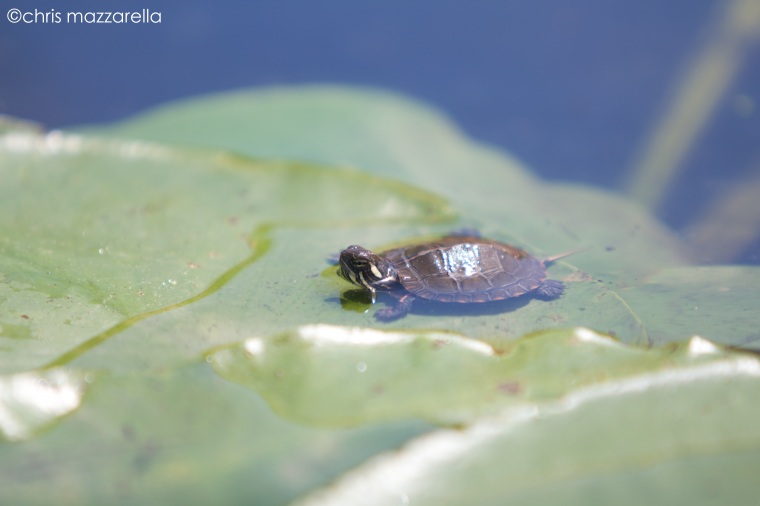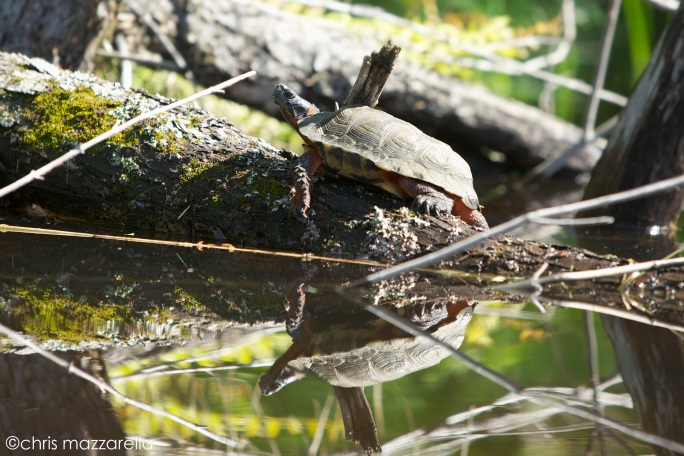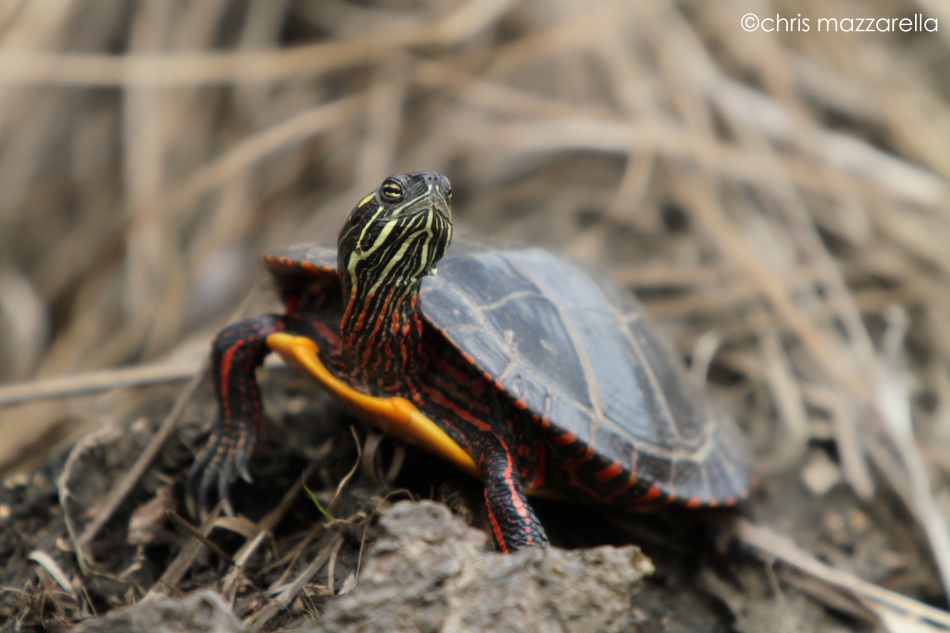The sad story of the death of Lonesome George, a giant tortoise.
When you’re gone, you’re gone, it is said. But in the case of this example of the beauty of Mother Nature, the idea of being gone is as final as it comes; George was the last of his species.
Here’s how the BBC reported the story,
Last Pinta giant tortoise Lonesome George dies
Staff at the Galapagos National Park in Ecuador say Lonesome George, a giant tortoise believed to be the last of its subspecies, has died.
Scientists estimate he was about 100 years old.
Park officials said they would carry out a post-mortem to determine the cause of his death.
With no offspring and no known individuals from his subspecies left, Lonesome George became known as the rarest creature in the world.
For decades, environmentalists unsuccessfully tried to get the Pinta Island tortoise to reproduce with females from a similar subspecies on the Galapagos Islands.
Park officials said the tortoise was found dead in his corral by his keeper of 40 years, Fausto Llerena.
While his exact age was not known, Lonesome George was estimated to be about 100, which made him a young adult as the subspecies can live up to an age of 200.
Lonesome George was first seen by a Hungarian scientist on the Galapagos island of Pinta in 1972.
Environmentalists had believed his subspecies(Chelonoidis nigra abingdoni) had become extinct.
Lonesome George became part of the Galapagos National Park breeding programme.
After 15 years of living with a female tortoise from the nearby Wolf volcano, Lonesome George did mate, but the eggs were infertile.
He also shared his corral with female tortoises from Espanola island, which are genetically closer to him than those from Wolf volcano, but Lonesome George failed to mate with them.
He became a symbol of the Galapagos Islands, which attract some 180,000 visitors a year.
Galapagos National Park officials said that with George’s death, the Pinta tortoise subspecies has become extinct.
They said his body would probably be embalmed to conserve him for future generations.
Tortoises were plentiful on the Galapagos islands until the late 19th century, but were later hunted for their meat by sailors and fishermen to the point of extinction.
Their habitat furthermore suffered when goats were introduced from the mainland.
The differences in appearance between tortoises from different Galapagos islands were among the features which helped the British naturalist Charles Darwin formulate his theory of evolution.
Some 20,000 giant tortoises of other subspecies still live on the Galapagos.
Continuing the tribute, Chris Mazzarella had some stunning photographs on his wonderful photographic blogsite Fast Forward. (Do take a look!) I held my breath and asked Chris for permission to republish his article and was delighted to be given his approval. Thanks Chris, thanks very much.
oooOOOooo
An Ode To George
To pay tribute to our late friend Lonesome George, I thought it would be appropriate to write a post in celebration of turtles. George was the last tortoise of the subspecies Chelonoidis nigra abingdoni from Pinta Island in the Galapagos. Sadly George passed yesterday at the tender age of 100 years. This could be considered middle aged for the tortoise who’s counterparts can live beyond 200 years.

In Vermont, we have seven species of turtles, and I run into many of them while kayaking around the state. The one I see most often is the painted turtle. I spot these guys by the dozen basking in the sun while I’m paddling throughout the northeast. They are very cooperative subjects, but will head for a swim if you get too close. I don’t like spoiling anyone’s sunbath so I do my best to keep a respectable distance out on the water.
You can check out the biggest turtle I’ve seen all year in an April post entitled Snappers.
I’ve read that snapping turtles are the most common turtle in Vermont, yet I do not see quite as many in my travels. When I do see them, they are usually trolling underwater, covered in algae.

One of the rarer species of turtle I encountered this spring was a wood turtle in Magalloway Brook. I didn’t have much time to prepare for this shot before he launched off the log and into the water. It was a brief meeting, but certainly a memorable one as this is the only wood turtle I’ve ever photographed.
While turtles are not known for their speed they do offer unique challenges for photographers, particularly when shooting in the sun. Their reflective carapace makes them easy to spot, but difficult to expose for. A polarizing filter is sometimes necessary to reduce the glare on their wet shells. While this will help, the ideal situation is to shoot them under overcast skies.
Another thing to keep in mind is the angle of your shot. The kayak makes a great vehicle for wildlife photography because it keeps you low on the water. I often try to shoot wildlife at eye level. This gives you the same perspective from which the animal views the world. It’s much more interesting than a bird’s eye view, for example, and embodies the subject with the sense of pride that it deserves.
George’s passing marks the end of an important legacy, as the Galapagos turtles played a very important role in the foundation of Darwin’s theory of Natural Selection.
To learn more and see photos of George check out this great article by Jess Zimmerman at Grist.org.
We salute you George!
oooOOOooo
What stunningly beautiful photographs. Once again, Chris, thanks for your permission to republish your Ode.
Finally, going back to 2009 there’s a BBC video of Simon Reeve visiting Lonesome George while visiting the Galapagos islands.


Sadly, George was a one-tortoise mass extinction we know about. Globally, geoscientists estimate habitat destruction, shifting climatic zones, and ocean acidification (etc) are already causing species to go extinct at a faster rate than any apparent from the fossil record. So, here is my ode to George, by ecologist Peter Sale: Our Dying Planet – An Ecologist’s View of the Crisis We Face (2011).
LikeLike
Thanks for that link to the book by Peter Sale.
But an item on the BBC news website today, see http://www.bbc.co.uk/nature/18604240 suggests that all may not be lost. I quote a little:
“But a series of genetic discoveries in recent years at Volcano Wolf on Isabela, one of the Galapagos Islands, offers some consolation.
Scientists from Yale found a first generation hybrid of the Pinta giant tortoises and Isabela tortoises, meaning that 50% of Lonesome George’s genetic material is still around, along with other strands of the genetic ancestry that Galapagos giant tortoises share.
“Even though Lonesome George and his lineage are gone there are still a couple of animals up on Volcano Wolf where they carry essentially the genetic make-up that is related to George, so some of the relatives are still around,” says Dr Peter Paul Van Dijk, co-chair of the IUCN specialist group for tortoises and freshwater turtles.
The movement of tortoises between the islands by boat is thought to be behind the mixing of genes.
How much solace can be found in the presence of some of Lonesome George’s genes in other subspecies of Galapagos giant tortoises, depends on how subspecies are viewed.”
LikeLike
Thanks Paul. I meant to say, I really have enjoyed every single programme Simon Reeve has made – he has by far one of the best jobs of anyone in television today and does it all for the right reasons too… The BBC also re-traced Darwin’s voyage in The Beagle quite recently (didn’t they?) – something else I missed!
On other matters: More record-breaking rainfall in the UK today – and one fatality as a result – one inch of rain fell in one hour here (a third of average for the entire month)…
LikeLike
An inch in an hour! More like a tropical storm but then again maybe that isn’t such an idiotic comparison. Here we have some towering cumulus towards the rim (Mogollon Rim) and the sound of thunder. Thus we wait for rain. Oh, and the last time we had an inch of rain was in March; that was 1.28 inches for the whole month! In fact to all intent and purposes that was the last time we had rain!
LikeLike
I’m sure you will find video clips on the Internet.
LikeLike